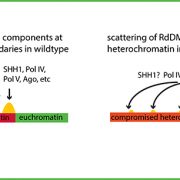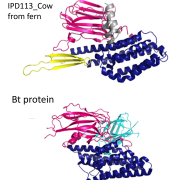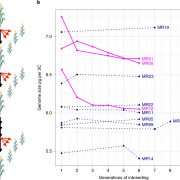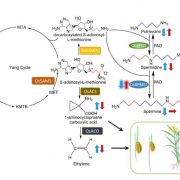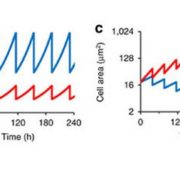Many modes of Striga resistance in sorghum
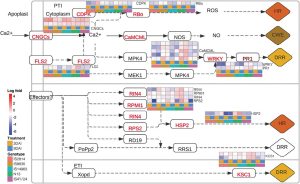 Witchweeds (Striga spp.) are parasitic plants. Like other weeds, they compete with food crops, but they do so very efficiently by penetrating host tissues and forming vascular connections. Through this effective extraction of nutrients and photosynthate from their hosts, Striga can literally wipe out yields in infected fields. Striga are most abundant in tropical regions including sub-Saharan Africa, and particularly affect sorghum, a staple crop in these regions. Here, Mutinda et al. used weighted gene co-expression network analyses (WGCNAs) to investigate how five Sorghum genotypes with some Striga resistance respond to infection. The lines analyzed, from diverse regions of Africa, likely acquired resistance independently, yet several common defense pathways were identified. Striga infection can activate pathogen-triggered immunity (PTI) and effector-triggered immunity (ETI) as well as salicylic and jasmonate-based defenses. Increased lignification to provide mechanical barriers and resist penetration also is a defense mechanism employed by some varieties. The WGCNA analysis further identified several interesting differentially regulated genes with known roles in defense [e.g., involved in callose synthesis, phosphoinositide signaling, and a thaumatin-like (PR-5) protein]. These results suggest several opportunities to breed or engineer sorghum with enhanced Striga resistance. (Summary by Mary Williams @PlantTeaching) J. Exp. Bot 10.1093/jxb/erad210
Witchweeds (Striga spp.) are parasitic plants. Like other weeds, they compete with food crops, but they do so very efficiently by penetrating host tissues and forming vascular connections. Through this effective extraction of nutrients and photosynthate from their hosts, Striga can literally wipe out yields in infected fields. Striga are most abundant in tropical regions including sub-Saharan Africa, and particularly affect sorghum, a staple crop in these regions. Here, Mutinda et al. used weighted gene co-expression network analyses (WGCNAs) to investigate how five Sorghum genotypes with some Striga resistance respond to infection. The lines analyzed, from diverse regions of Africa, likely acquired resistance independently, yet several common defense pathways were identified. Striga infection can activate pathogen-triggered immunity (PTI) and effector-triggered immunity (ETI) as well as salicylic and jasmonate-based defenses. Increased lignification to provide mechanical barriers and resist penetration also is a defense mechanism employed by some varieties. The WGCNA analysis further identified several interesting differentially regulated genes with known roles in defense [e.g., involved in callose synthesis, phosphoinositide signaling, and a thaumatin-like (PR-5) protein]. These results suggest several opportunities to breed or engineer sorghum with enhanced Striga resistance. (Summary by Mary Williams @PlantTeaching) J. Exp. Bot 10.1093/jxb/erad210


